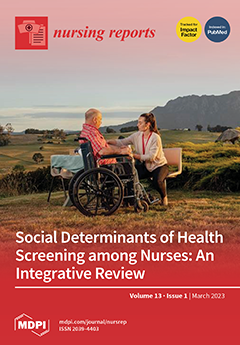Context: An emergency medical nurse is a health professional who operates at a very high level in the field of emergencies. The nurses of the critical area departments of the Territorial Emergency Department currently operate in the Sardinian helicopter rescue service. The effectiveness of the treatment that these nurses administer can be attributed to the quality of the previous and recurrent training that this unit must undergo.
Objective: This study’s aim was to investigate the role of civil and military helicopter nurses in the context of Italian medical aid.
Methods: A qualitative study, with a phenomenological approach, was conducted by interviewing 15 emergency medical nurses, using detailed recordings and transcripts. These findings were then compared to understand how nurses work outside their department of origin, how their training has influenced their ability to establish themselves outside it, and thus their ability to become part of a context considered to be of the highest level.
Participants and research context: The personnel interviewed in this study were those who were working in the helibases of Cagliari, Olbia, and Alghero. The limitations of this study are linked to the impossibility of obtaining an internship at a company, because, at the time of the study, an agreement between the university and the Areus company was not active.
Ethical considerations: Participation in this research was completely voluntary. In fact, the participants could cease participating at any time.
Results: This study revealed issues related to training, preparation, motivation to carry out the role held, nursing autonomy, the willingness to collaborate between the various rescue organizations, the use of the helicopter rescue service, and possible improvements for this service.
Conclusions: civil air rescue nurses can deepen their knowledge by examining the work of military air rescue nurses, because, although the operational contexts are different, some techniques used in a hostile environment are also applicable to civilian environments. By doing so, nurses could become independent team leaders for all intents and purposes, managing their own training, preparation, and technical skills.
Full article






